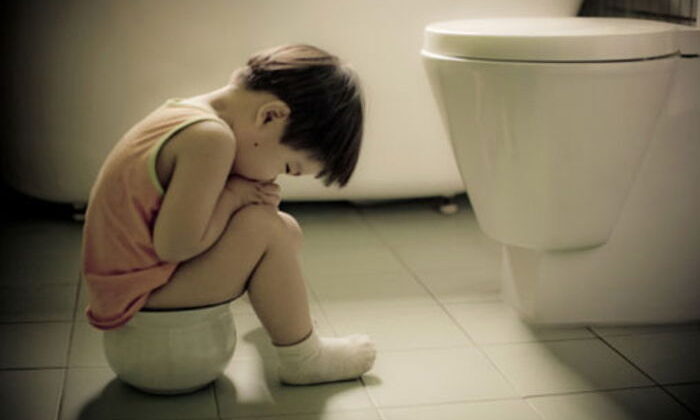

Constipation in children is defined as a condition where they pass two or fewer painful, hard stools per week. It is a common issue, affecting approximately 3% of children visiting pediatric outpatient clinics. While 95% of constipation cases in children are functional, meaning there’s no underlying medical condition, the remaining 5% may be attributed to surgery or other diseases.
Identifying Constipation Symptoms
A diagnosis of constipation is considered if a child under 4 years old exhibits at least two of the following symptoms for a month, or for two months in children older than 4:
Infants typically pass their first black stool (meconium) within 24 to 48 hours after birth. Subsequently, breastfed babies may have around four golden yellow stools daily, although formula-fed infants might have fewer.
The majority of constipation cases in children are functional, with no anatomical problems involved. This is often due to dietary changes or stressors that children face:
A child who experiences constipation once may associate bowel movements with pain due to straining. This fear can lead to stool withholding, where the child avoids bowel movements to avert pain. This results in harder stools as the liquid is absorbed, leading to more pain and perpetuating the cycle. Over time, complications like anal fissures, rectal prolapse, or hemorrhoids may develop. Persistent fecal retention can cause the rectum to expand, allowing softer stools to leak and soil the child’s underwear.
A thorough history and physical examination are usually sufficient for diagnosing constipation. The family should be questioned in detail, and even minor details should not be overlooked. The abdomen and anal area are examined, with further tests conducted if necessary during follow-up.
Types of Constipation
Exclusively breastfed babies might not defecate daily, and this can last up to a week. They generally remain content, with soft stools upon defecation, and do not exhibit distress, vomiting, or swollen abdomens. This condition, known as ‘false constipation,’ is normal and typically resolves with the introduction of solid foods.
Additionally, infants under 6 months may strain before defecating, pulling their legs up, which is not constipation. This phenomenon, termed ‘infant dyschezia,’ is due to the underdevelopment of their defecation mechanism, which usually resolves on its own in a few weeks. Avoiding interventions like rectal stimulation is advised.
Treating constipation is a complex process requiring collaboration between the child, family, and healthcare provider. It often occurs without underlying diseases, and treatment should address all contributing factors:
Constipation treatment requires patience and persistence. Medications may take time to be effective and might need long-term usage, with occasional dose adjustments. It can take time for children to overcome fear of painful defecation. Families may prematurely stop treatment, thinking it unnecessary. Treatment should continue for at least 2-3 months, ensuring regular, soft stools for at least a month before considering cessation.
If treatment is stopped too soon or not followed as advised, constipation can persist or recur. Around 25% of those with childhood constipation may experience it into adulthood.
Underlying Conditions That May Cause Constipation
Approximately 5% of constipation cases have anatomical causes. Conditions like Hirschsprung’s disease, anal atresia, and anal stenosis, which may require surgical intervention, are common. Other conditions include hypothyroidism, hypokalemia, hypercalcemia, and celiac disease. Appropriate testing can confirm these diagnoses when suspected.
ENGLİSH
5 gün önceSİGORTA
5 gün önceSİGORTA
5 gün önceSİGORTA
8 gün önceSİGORTA
10 gün önceSİGORTA
10 gün önceDÜNYA
19 gün önce 1
Elon Musk’s Father: “Admiring Putin is Only Natural”
11563 kez okundu
1
Elon Musk’s Father: “Admiring Putin is Only Natural”
11563 kez okundu
 2
xAI’s Grok Chatbot Introduces Memory Feature to Rival ChatGPT and Google Gemini
10596 kez okundu
2
xAI’s Grok Chatbot Introduces Memory Feature to Rival ChatGPT and Google Gemini
10596 kez okundu
 3
Minnesota’s Proposed Lifeline Auto Insurance Program
9478 kez okundu
3
Minnesota’s Proposed Lifeline Auto Insurance Program
9478 kez okundu
 4
Introducing Vivo Y300 Pro+: A Blend of Power and Affordability
7416 kez okundu
4
Introducing Vivo Y300 Pro+: A Blend of Power and Affordability
7416 kez okundu
 5
What’s New in iOS 19: Updates and Compatibility
6098 kez okundu
5
What’s New in iOS 19: Updates and Compatibility
6098 kez okundu
Veri politikasındaki amaçlarla sınırlı ve mevzuata uygun şekilde çerez konumlandırmaktayız. Detaylar için veri politikamızı inceleyebilirsiniz.